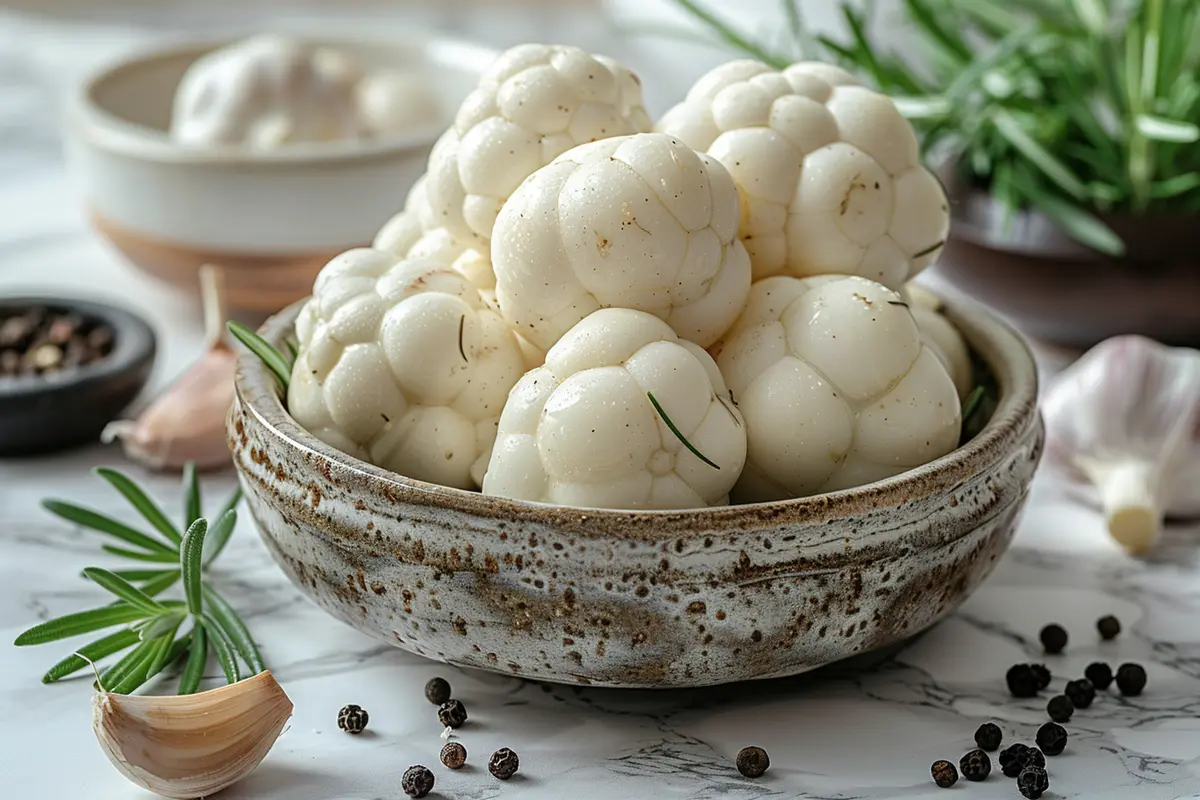Gandules, also known as pigeon peas, are a staple in many cuisines. They offer a unique flavor and texture. This article will explore everything you need to know about them. From their origins to cooking tips, you’ll become an expert.
What are Gandules?
Gandules are small, edible beans that grow in pods. They are part of the legume family. These beans are popular in Caribbean, Latin American, and Asian dishes. They have a slightly nutty and earthy taste. Their texture is firm, yet creamy when cooked. They add a wonderful depth of flavor to various recipes.
History and Origin of Gandules
The origins of these legumes can be traced back to Africa. However, they have been cultivated in Asia and the Caribbean for centuries. They were introduced to the Americas by way of the slave trade. Today, they are essential in many traditional dishes across the globe. Their ability to thrive in various climates has made them widespread. They continue to be a vital part of the culinary heritage of many cultures.
Gandules Around the World
They are known by different names. For example, they are called “pigeon peas” in English. They are also known as “arhar dal” in India. In the Caribbean, they are often referred to as “guandules.” Each region has adapted them into their local cuisine. Consequently, this demonstrates their incredible versatility. Therefore, their popularity continues to grow.
Nutritional Benefits of Gandules
These beans are not only delicious but also packed with nutrients. They are a good source of protein and fiber. Additionally, they contain many essential minerals and vitamins. They provide a good amount of folate, iron, and phosphorus.
Protein Powerhouse
These legumes are an excellent source of plant-based protein. This makes them a valuable addition to any diet, especially for vegetarians and vegans. Protein is essential for building and repairing tissues. Therefore, contribute to muscle growth and overall health. Moreover, they offer a sustainable alternative to animal proteins.
High in Fiber
The high fiber content of these beans promotes healthy digestion. Fiber helps regulate bowel movements and prevents constipation. It also helps you feel full for longer. This, accordingly, aids in weight management. A diet high in fiber may also help lower cholesterol. Therefore, incorporating them can support your gut health.
Essential Minerals and Vitamins
These beans provide many important minerals and vitamins. They are a good source of iron, which helps prevent anemia. Additionally, they contain folate, important for cell growth and development. Furthermore, they contain phosphorus, crucial for bone health. Therefore, they offer a mix of nutrients that support a healthy lifestyle.
Buying and Storing Gandules
Buying and storing them properly is crucial. This ensures you can enjoy their best flavor and texture. They are often sold in dried, canned, or frozen forms. Therefore, you have multiple choices.
Choosing the Right Gandules
When buying dried legumes, look for beans that are whole and uniform in color. Avoid beans that look cracked or damaged. Canned beans should be free of dents or bulges. Check the expiration date. Frozen beans should appear loose, not clumped together. Choose beans that best suit your needs.
Storing Gandules
Dried legumes should be stored in an airtight container. Keep them in a cool, dry place. This helps them retain their quality. Canned beans, on the other hand, can be stored in a pantry. Once opened, refrigerate them in a sealed container. Frozen beans can remain in the freezer. Make sure they are tightly sealed. Therefore, proper storage extends their shelf life.
How to Cook Gandules
Cooking with them is straightforward. There are many ways to prepare them. Here are some simple methods and recipes to help you get started.
Preparing Dried Gandules
Dried legumes need to be soaked before cooking. This softens them and reduces cooking time. Place the dried beans in a large bowl. Cover them with plenty of water. Let them soak overnight, or for at least 6-8 hours. Drain and rinse them well before cooking. This preparation method helps to achieve the best results.
Basic Cooking Methods
- Boiling: Place soaked beans in a pot. Cover them with water or broth. Bring to a boil, then reduce heat. Simmer until they are tender. This usually takes about 45 minutes to an hour.
- Pressure Cooking: Pressure cookers can drastically reduce cooking time. Cook the soaked beans for about 20-25 minutes. Always follow the manufacturer’s instructions.
- Slow Cooking: Use a slow cooker for a set-it-and-forget-it option. Cook beans on low for 6-8 hours. Add broth or water as needed.
Simple Gandules Recipe
A simple bean recipe can be a great starting point. Here’s a basic preparation:
- Soak 1 cup of dried beans overnight.
- Drain and rinse the soaked beans.
- Place them in a pot with 4 cups of water or broth.
- Add salt, pepper, and other seasonings to taste.
- Bring to a boil, then reduce to a simmer.
- Cook until tender. This takes approximately 45 minutes to 1 hour.
- Serve warm. Garnish with fresh herbs if desired.
Gandules in Various Cuisines
They are a versatile ingredient used in many cuisines. They add a unique taste and texture to numerous dishes. Here are some ways they are used around the world.
Caribbean Dishes
In the Caribbean, they are a key ingredient. For instance, they are often used in rice dishes like arroz con beans. This is a flavorful rice dish with beans, spices, and sometimes meat. They are also used in stews and soups. Their flavor enriches the dish. Therefore, they are an essential part of Caribbean cooking.
Latin American Recipes
Many Latin American countries use them in their cooking. They are included in stews, soups, and rice dishes,add depth to the flavor profile of these dishes and often combine with other beans, vegetables, and spices. Consequently, they contribute to the richness of Latin American cuisine.
Asian Preparations
In some parts of Asia, they are also a popular ingredient. They are used in curries, stews, and lentil dishes. The beans absorb the flavors of the spices. This creates a tasty and satisfying meal. They may be paired with coconut milk, chili, and other local ingredients. Hence, they are quite adaptable.
Gandules and Meal Planning
Incorporating these beans into your meal plan is easy. They can fit into a balance diet. They add nutrients, flavor, and protein to any meal.
Healthy Meal Ideas
- Salads: Add cooked and cooled beans to your salads. They provide protein and fiber. Combine them with mixed greens, cucumber, and tomatoes.
- Soups and Stews: Include beans in your favorite soups and stews. They add nutrients and substance. For example, pair them with vegetables and herbs.
- Bowls: Create balanced bowls with them, rice, and vegetables. Add a sauce for more flavor. This results in a nutritious and filling meal.
Tips for Incorporating Gandules
- Plan ahead: Soak dried beans the night before. This will save time when cooking.
- Batch cook: Cook a large batch of beans. Use them in different dishes during the week.
- Experiment: Try different spices and herbs. This will enhance the flavor of your dishes. Therefore, cooking with these legumes is quite easy.
Gandules: Addressing Dietary Needs and Concerns
They are a versatile ingredient. They can fit many dietary needs and preferences. However, some people have digestive concerns. Therefore, it is important to understand their effects.
Suitability for Various Diets
- Gluten-free: They are naturally gluten-free. They are safe for people with gluten intolerance.
- Vegan and Vegetarian: They are an excellent source of plant-based protein. They are perfect for vegan and vegetarian diets.
- High Fiber: They are high in fiber, which can be beneficial. However, it’s important to consume them in moderation if you are not used to high fiber foods.
Potential Digestive Issues
Some people might experience bloating or gas after eating them. This is due to their high fiber content. To minimize this, soak and cook them thoroughly. Introduce them gradually into your diet. Consider adding carminative herbs such as cumin or fennel. Therefore, these measures can improve your digestion.
Conclusion
These beans are more than just a bean. They are a flavorful, nutritious, and versatile ingredient. They are used in a wide array of cuisines around the world. Understanding their history, nutritional benefits, and cooking methods can empower you to incorporate them into your diet. Whether you are looking to add protein, fiber, or a unique flavor, they are an outstanding option. Moreover, their cultural relevance enhances their appeal. Therefore, these beans have a lasting impact on culinary traditions and meal plans.
Frequently Asked Questions (FAQs)
What does gandules mean in English?
Gandules are known as pigeon peas in English. They are also called congo peas or gungo peas in different regions.
Are gandules lentils?
No, they are not lentils. They are a type of legume in the pea family. Lentils, however, are a different type of legume.
What do gandules taste like?
They have a slightly nutty and earthy flavor. They are known for their firm yet creamy texture when cooked. However, their flavor can vary slightly depending on how they are prepared.
Are pigeon peas the same as gandules?
Yes, pigeon peas and them are the same thing. They are different names for the same type of bean. In conclusion, both names refer to the same plant.

